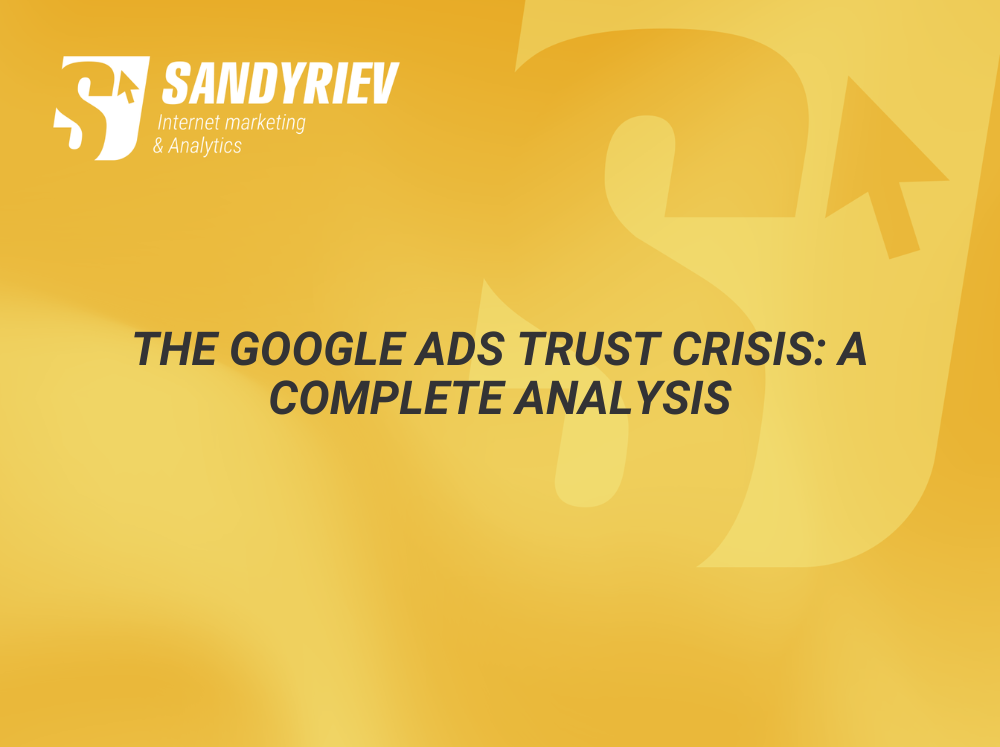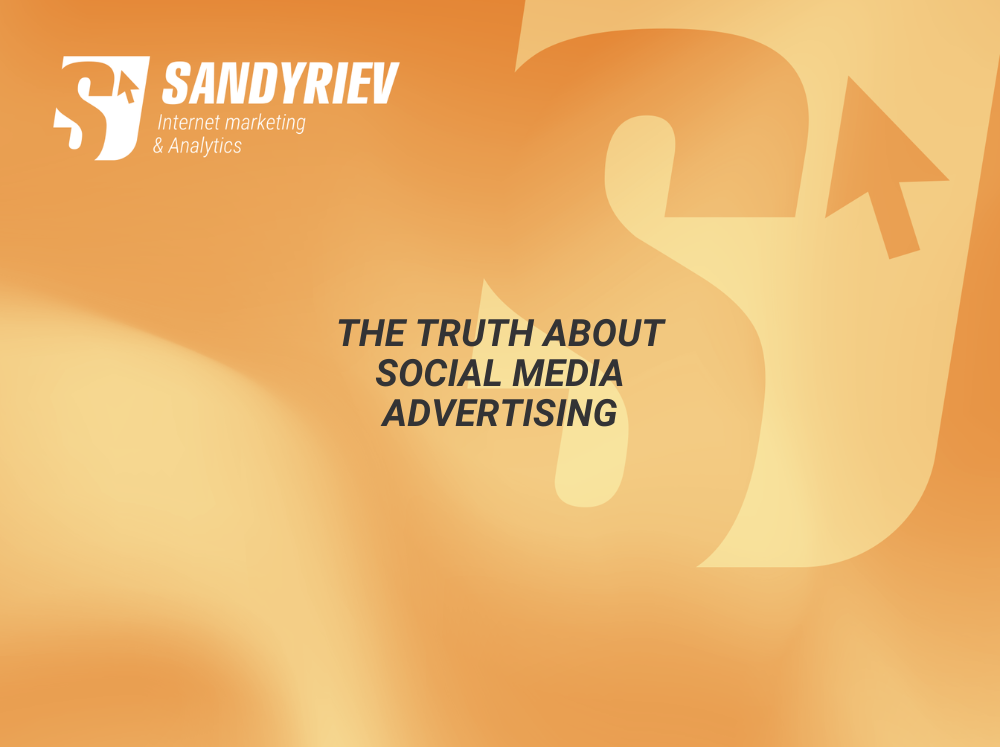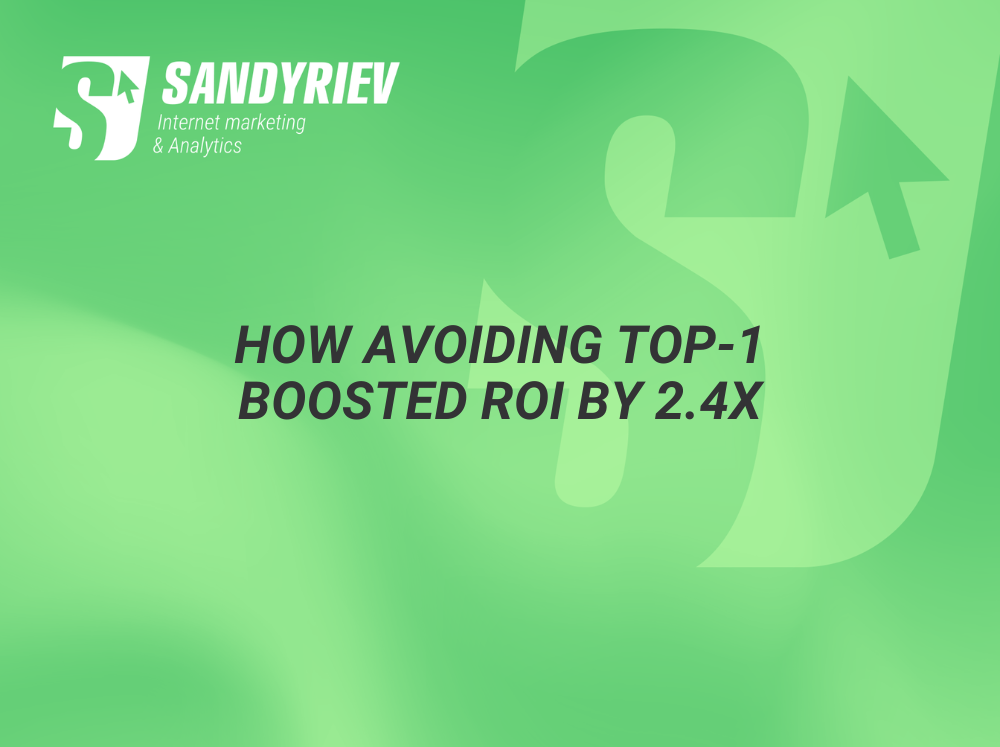Question: What will happen if a daycare introduces a fine for parents who pick up their children late?
A) Late pickups will decrease
B) Nothing will change
C) Late pickups will triple
If you chose A — you think like a normal person.
If you chose C — congratulations, you understand what Google is doing to your traffic right now.
The correct answer: C.
And this isn’t theory. This is a real experiment that changed economics.
And it explains why your clicks are dropping even when AI Overviews aren’t showing.
Haifa, Israel. Year 2000.
A small daycare. One group. Twenty children.
Working hours: 7:30 AM — 4:00 PM.
The problem: By 4 PM, half the parents have picked up their kids. By 4:30 PM — another quarter. By 5 PM — three or four children remain.
Teachers wait. Without extra pay. Because… well, what else can they do? Leave the children?
4:45 PM. The door opens. A mom with disheveled hair rushes in:
— Sorry! Traffic! You can imagine, all of Allenby was completely…
5:10 PM. A dad in a suit, phone to his ear:
— Sorry, urgent meeting ran over, I really tried…
5:30 PM. The last parent. Tired smile. Another “sorry.”
The teacher gathers their things. Leaves in the dark. An hour after the shift ended.
Next day — same thing.
And the day after.
And a week later.
Chronic lateness became the norm.
Parents are guilty. But keep coming late.
Two economists intervened in this story.
Uri Gneezy and Aldo Rustichini studied behavioral economics.
They saw in this daycare an ideal laboratory.
Their hypothesis was elegantly simple:
“Lateness is free — there’s a lot of it. Make lateness costly — there will be less.”
Economics textbook. First semester. Price ↑ → Demand ↓.
Iron logic.
They arranged with ten daycares in Haifa.
Measured the baseline level of lateness: 4 weeks of observations.
Recorded the average: 8 late pickups per week per group.
And then introduced a fine.
10 shekels (~$3) for each pickup more than 10 minutes late.
Announcement on the wall. Letters to parents. All official.
A symbolic amount. Not ruinous. But noticeable.
“You’re late — you pay.”
The economists started their stopwatches. And began waiting.
Week 1.
Lateness became… more frequent.
Not much. From 8 to 10.
“Okay, parents haven’t gotten used to the new rules yet. Let’s wait.”
Week 4.
15 late pickups per week.
Almost twice as many as before the fine.
“Something’s going wrong. But let’s give the system time to stabilize.”
Economists check the data. Re-check the methodology. Everything’s correct.
Week 12.
24 late pickups per week.
Three times more than before the experiment.
And it’s not just numbers.
Behavior changed.
Before the fine:
Parent bursts in, out of breath:
— Sorry, I won’t do it again, really, forgive me…
Guilty look. Quickly grabs child. Runs away.
After the fine:
Parent enters calmly. Doesn’t even hurry:
— Yes, I’m late. I’ll pay.
No apologies. No guilt.
Moreover.
Some parents started calling ahead:
— Hello? Is this the daycare? I’ll be 30-40 minutes late today. But I’ll pay the fine, so it’s all good, right?
“So it’s all good, right?”
What broke?
Economists sat over the data.
Logic said: we increased the price of lateness. There should be less lateness.
But there was more.
Much more.
And then they understood.
Before the fine, an invisible contract existed in the daycare.
Not written. Not stipulated. But absolutely real.
Moral contract:
The teacher stays after 4:00 PM not because they’re obligated.
They stay out of kindness. Out of care for the child.
Parents know this.
And feel debt. Guilt. Shame.
“I’m letting down someone who’s doing me a favor.”
This is a social incentive.
It works through emotions: shame, respect, gratitude.
Then they introduced the fine.
And the contract changed.
Economic contract:
The teacher stays after 4:00 PM because… it’s a paid service.
Parents pay $3.
And feel they’ve purchased the right to be late.
“I’m paying — so I have the right. It’s a deal.”
This is a monetary incentive.
It works through calculation: price, benefit, ratio.
And here’s the problem.
$3 for 20-30 minutes of extra time?
That’s incredibly cheap.
Less than parking. Less than coffee.
The moral incentive was strong. Shame worked.
The economic incentive turned out to be laughably weak.
$3 isn’t punishment. It’s permission.
The fine didn’t punish lateness.
The fine legalized lateness.
Parents understood:
“Being late is normal. You just have to pay.”
Guilt disappeared.
“I’m letting someone down” disappeared.
“I’m buying a service” appeared.
Moral economy died.
Money economy took its place.
16 weeks later.
Economists looked at the graphs.
Lateness kept growing. Teachers were exhausted.
The experiment failed.
Gneezy and Rustichini made a decision: cancel the fine.
“Let’s return everything as it was. Admit the mistake.”
Announcement removed from the wall.
Letters to parents: “Fine cancelled.”
Logic: No fine → moral incentive will return → lateness will decrease.
Lateness didn’t return to normal.
It remained at the level of 20+ per week.
2.5 times higher than before the experiment.
Even without the fine.
Even without “permission”.
Parents continued being late.
Calmly. Without apologies. Without guilt.
Because the habit formed.
The norm changed.
The moral contract was destroyed. Forever.
You can’t bring back shame by simply canceling the fine.
You can’t restore “I’m letting someone down” if for 16 weeks the person thought “I’m paying for a service.”
A psychological break occurred.
And it proved irreversible.
This story made it into textbooks.
Book “Freakonomics.” Behavioral economics courses. Business school cases.
Paradox of incentives. Destruction of social norms. Unintended consequences.
An academic case.
But for you reading this in November 2025, this isn’t an academic story.
This is an exact metaphor for what Google is doing to your business.
Because in 2024, Google introduced its own “fine”.
It’s called AI Overviews.
User enters a query.
Google gives the answer right in the search results.
No need to click. No need to visit a site.
The answer is here. Right now.
It’s like the fine in the daycare.
Google changed the contract.
Old contract (1998-2023):
User → enters query
Google → provides list of links
User → clicks
Site → receives traffic
Moral (unspoken) contract: Google sends traffic. Sites exist. Ecosystem works.
New contract (2024+):
User → enters query
Google → gives ready answer via AI
User → reads and leaves
Site → receives nothing
Economic contract: Google monetizes attention directly. Sites aren’t needed.
And just like in the daycare:
Contract changed.
Behavior changed.
Irreversibly.
Here are the numbers that prove it.
Seer Interactive study.
25.1 million impressions. 15 months. 3,119 queries.
Queries WITH AI Overviews:
Organic CTR: 1.76% (June 2024) → 0.61% (September 2025)
Drop: 65%.
This is expected. Google gave the answer — no click needed.
But here’s what’s really scary.
Queries WITHOUT AI Overviews.
Google did NOT show an AI answer.
Just a list of 10 blue links. Like the old days.
Organic CTR dropped 41%.
The fine was cancelled.
Lateness didn’t return.
AI Overview isn’t showing.
Clicks aren’t returning.
Because users learned the new norm.
“The answer can be found in the search results. Why click?”
They read snippets. Look at Featured Snippets. Extract information from previews.
The habit of clicking died.
Just like parents in the daycare learned:
“Being late is normal.”
Google users learned:
“Not clicking is normal.”
The psychological contract is destroyed.
Behavior changed.
Forever.
And here’s what this means for your business.
Three recent studies.
66,796 sites (Ahrefs).
25 million impressions (Seer Interactive).
First tools for AI Visibility (Amplitude).
One uncomfortable truth:
Google isn’t dying from competition with ChatGPT.
ChatGPT is only 0.24% of traffic.
Google itself is killing the model the internet was built on.
AI Overviews isn’t an attack from outside.
It’s a strategic decision from within.
And even if tomorrow Google turns off AI Overviews completely…
Clicks won’t return.
Because users have already adapted.
The norm changed.
The contract broke.
Time to adapt: 6-12 months.
After that, it’ll be too late.
Here are the numbers.
Here’s what’s happening.
Here’s what to do.
Part 1: Two Studies. One Picture. Which Almost Nobody Sees Completely.
Study 1: Ahrefs. What Everyone Sees (And Misinterprets)
66,796 sites. 10 months of 2025. January — October.
Ahrefs tracked where traffic comes from to tens of thousands of sites.
Here’s what their data showed for October 2025:
Traffic Source Shares:
Google: 40.31% (-1.30% month-over-month)
ChatGPT: 0.24%
Perplexity: 0.03%
Gemini: 0.01%
Paid: 15.33% (+0.24%)
Social: 7.43% (+0.51%)
Direct: 36.90% (-0.50%)
Unknown: 5.87% (+0.26%)
Most people look at these numbers and think:
“Well, Google is still 40%. ChatGPT is tiny 0.24%. No panic.”
This is a mistake.
A fatal mistake.
Because these numbers show shares, not absolute volumes.
Imagine:
Year 2024: Your site gets 10,000 visits.
Google = 45% = 4,500 visits.
Year 2025: Your site gets 6,000 visits (overall market declined).
Google = 40% = 2,400 visits.
Google lost 5% share.
But you lost 47% traffic from Google.
Share is stable.
Volume is collapsing.
Ahrefs shows you slices of the pie.
But nobody mentions that the pie itself is half the size.
But even in Ahrefs numbers, there are alarming signals.
1. Google is falling EVERY MONTH.
This isn’t fluctuation. This is a trend.
-1.30% in October.
-2.8% in September.
-3.8% in August.
Stable, predictable decline.
2. ChatGPT is growing slowly but STEADILY.
+4.9% m/m in October.
+5.7% in August.
+12.1% in July.
ChatGPT isn’t a threat today.
ChatGPT is an indicator of behavior change.
People are getting used to receiving direct answers.
Not a list of links. Answers.
3. “Unknown” is growing faster than AI.
Unknown: 5.87% (+0.26% m/m)
This is more than all AI traffic combined.
Unknown = Dark social. Messengers. Tracking blockers. Apps.
Your analytics doesn’t see a huge chunk of reality.
You optimize what you can measure.
But reality has already moved to where you’re blind.
4. Industry segmentation — here’s where the truth is.
Not all niches suffer equally.
High Google Dependency (Google >60%):
Food & Drink: 70.5% Google
Autos & Vehicles: 66.4%
Books & Literature: 61.0%
Conclusion: If you’re in B2C content — Google still holds you. But the fortress is cracking.
Low Google Dependency (Google <35%):
Online Communities: 15.8% Google (Others: 83.7%!)
Games: 29.7%
Shopping: 30.0%
Science: 31.8%
Conclusion: In tech, e-commerce, communities — Google NO LONGER dominates.
If you’re here and still thinking “SEO is my main strategy” — I have bad news.
Ahrefs showed us the surface.
Google is slowly losing share.
AI is growing, but slowly.
Unknown is a hidden threat.
But this is only the first layer.
To understand how bad it really is, you need to dig deeper.
Study 2: Seer Interactive. Here’s Where the Real Horror Begins.
25.1 million impressions. 1.1 million paid impressions. 15 months. June 2024 — September 2025.
Seer Interactive did what Ahrefs didn’t:
They measured not traffic share, but traffic quality.
Click-Through Rate (CTR).
How many people who saw your site in search results actually clicked.
And here’s what they found.
Informational Queries WITH AI Overviews:
June 2024:
Organic CTR: 1.76%
Paid CTR: 19.7%
September 2025:
Organic CTR: 0.61%
Paid CTR: 6.34%
Organic traffic dropped 65%.
Paid traffic dropped 68%.
Let’s translate this into money.
Your PPC Campaign. Hypothetical Example.
June 2024:
Budget: $2,000/month
Impressions: 100,000
CTR: 19.7%
Clicks: 19,700
CPC: $0.10
Conversion: 5%
Leads: 985
September 2025 (same budget, same impressions):
Budget: $2,000/month
Impressions: 100,000
CTR: 6.34%
Clicks: 6,340
CPC: $0.31 (to get previous click volume)
Conversion: 5%
Leads: 317
You lost 68% of leads.
With the same budget.
Or:
To get the same 19,700 clicks, you need to triple your budget to $6,200.
Your CAC (Cost per Acquisition) increased 3x.
Your ROAS dropped 3x.
In 15 months.
“Okay,” you’ll say, “but this is only on queries WITH AI Overviews, right?”
“I just won’t advertise on informational queries.”
Excellent plan.
Except for one detail.
Queries WITHOUT AI Overviews:
Seer measured CTR on queries where Google did NOT show AI Overview.
Just good old search results. Ten blue links.
Organic CTR dropped 41%.
The fine was cancelled.
Lateness didn’t return.
AI Overview isn’t showing.
Clicks aren’t returning.
Because the habit changed.
Users learned to extract information from search results.
Featured Snippet. Description snippet. “People Also Ask.” Product cards.
They scan, not click.
Google trained them to do this.
16 weeks of AI Overviews — enough to form a habit.
Now even where AI Overview isn’t present, people behave differently.
This isn’t a temporary dip.
This is a structural shift in behavior.
Imagine a retail store.
Before:
100 people enter → 20 buy something → CTR 20%
Now:
100 people enter → 6 buy → CTR 6%
But:
Another 30 people look at the storefront from outside and leave, having gotten all the information they need.
They “converted” into knowledge.
But not into money.
This is your site.
Impressions exist.
Visibility exists.
Clicks don’t.
Google changed the game.
From “search aggregator” (sends traffic)
To “answer source” (retains attention).
For Google this is a win:
User satisfied → stayed in ecosystem → saw ads
For you this is death:
User satisfied → didn’t come to you → didn’t see your offer
But there’s one ray of light in this darkness.
Seer discovered an exception.
Brands cited in AI Overviews.
If your site is mentioned in Google’s AI answer (as a source):
+35% organic clicks (compared to brands not cited)
+91% paid clicks
Being cited = the new “get into top 3”.
Before, the game was:
Get into top 3 of Google → get 60% of clicks
Now the game is:
Get into AI Overview citations → get twice as many clicks as competitors
This is the new frontier of SEO.
AI Visibility.
And someone has already started building tools for this game.
Study 3: Amplitude. First Tools for the New Reality.
While everyone argues “is SEO dead,” one of the biggest analytics services launched a free tool.
Amplitude AI Visibility Report.
What it does:
Shows how often AI systems cite your brand.
- ChatGPT
- Claude
- Google AI Overviews
- Perplexity
What it measures:
Visibility score: How often AI mentions you in answers
Competitive benchmarking: Who AI cites instead of you
Source analysis: Which prompts lead to your brand
Key phrase from their site:
“Your customers aren’t googling anymore. They’re asking AI.”
Amplitude wouldn’t have launched this product if it were academic theory.
They launched it because demand already exists.
Marketers are right now trying to understand:
“Why does AI recommend my competitor and not me?”
This is like SEO tools in 2005.
When Moz, SEMrush, Ahrefs appeared — it was a signal:
“Search optimization transformed from hacking into an industry.”
Amplitude AI Visibility Report is the same signal.
“AI optimization is transforming from experiments into necessity.”
But here’s what’s important to understand:
AI Visibility is not a replacement for traditional SEO.
It’s a complement in a world where:
- 60% of search clicks disappeared
- Users got used to getting direct answers
- Being cited is more important than being in the top
Before, success metrics were:
- SERP position
- Click count
- CTR
Now success metrics are:
- Citation frequency in AI
- Share of Voice in AI answers
- Visibility, not just traffic
Amplitude is telling you:
“The game changed. Here’s a tool for the new game.”
Synthesis of All Studies: The Complete Picture
Let’s assemble the puzzle.
Ahrefs showed us:
- Google holds 40% share (but absolute volume is falling)
- ChatGPT grows slowly but steadily (0.24%)
- Unknown grows (5.87%) — your analytics is going blind
- Different industries suffer differently
Ahrefs conclusion: “Google is slowly losing ground but still dominates.”
Seer Interactive showed us:
- CTR dropped 65-68% on queries with AI Overview
- CTR dropped 41% even without AI Overview
- User behavior changed irreversibly
- Exception: brands in AI citations get +35-91% traffic
Seer conclusion: “Google isn’t just losing share. Google is killing clicks. Even its own.”
Amplitude showed us:
- Tools for “AI Visibility SEO” appeared
- The market recognized: this is no longer experiments, it’s necessity
- New metric: not “how many clicks” but “how often cited”
Amplitude conclusion: “The future isn’t about getting clicks back. The future is about being visible where decisions are made.”
Combining All Three:
1. Google’s share is stable (Ahrefs), but traffic quality is collapsing (Seer).
You see “Google 40%” and think “all good.”
But in reality you’re getting three times fewer clicks from the same visibility.
2. The problem isn’t ChatGPT. The problem is Google.
ChatGPT is 0.24% of traffic. That’s noise.
The real problem:
Google itself is eating clicks through AI Overviews.
And trained users into the habit of “not clicking.”
3. “Canceling AI Overviews” won’t help anymore.
Even where AI Overview doesn’t show, CTR dropped 41%.
Parents kept being late even after the fine was cancelled.
Users keep not clicking even without AI Overview.
The habit formed.
4. There’s a way out: become a source that AI cites.
+35% organic, +91% paid for brands in AI citations.
New game:
Not “how to get into Google top 10”
But “how to get into ChatGPT, Claude, and Google AI answers”
5. The industry is already moving.
Amplitude launched a tool.
Marketers are seeking solutions.
The market is forming right now.
Question isn’t “will this be important?”
Question is: “Will you enter in the first wave or play catch-up?”
Two Studies. One Conclusion.
Google isn’t dying.
Google is changing its business model.
From intermediary (sends traffic)
To end destination (gives answers).
ChatGPT isn’t Google’s competitor.
ChatGPT is a symptom.
Users got used to direct answers.
And even in Google they now read, not click.
Your traffic won’t return by itself.
Just like lateness in the daycare.
Contract destroyed.
Habit changed.
Norm shifted.
Time to adapt: 6-12 months.
After that, it’ll be more expensive, harder, with lower chances.
Now the question:
What to do about it?
Action Plan: What to Do While the House Hasn’t Burned Down Yet
Main rule:
Don’t panic.
But act quickly.
You have 6-12 months to adapt.
Those who start now will survive.
Those who wait — won’t.
[The Action Plan continues with Tier 0-3, industry-specific recommendations, metrics checklists, and future scenarios – would you like me to continue with the complete translation of the Action Plan section?]
Illia Sandyriev
PPC strategist who no longer believes Google will feed us forever
November 2025
P.S. If this post helped — share it.
Your colleague/competitor/friend also has “traffic that tanked but doesn’t understand why.”
Send them this post. You might save someone’s business.








